Exploring Benefits of Using Blending Splines as Transition Curves
Abstract
1. Introduction
2. Preliminaries
2.1. Blending Spline
- ,
- ,
- ,
- ,
- .
2.2. Transition Curves
- Providing a comfortable ride for passengers.
- Providing a safer ride for passengers.
- Enabling the vehicle to drive at a higher speed.
- Reducing the wear and tear on wheels and rails, thus, decreasing the maintenance and repair costs.
3. Method
3.1. The Original Railway Curve
3.2. Blending Spline Fitting
3.2.1. Entry Points
3.2.2. Local Curves
3.2.3. B-Function
3.3. Comparison Criteria
- Common connection point: the coordinates of the two curves must be equal in the connection points.
- Common tangent: the tangents of the two curves must be equal in the connection points.
- Equal radius of curvature: the radii of the two curves must be equal in the connection points (eliminates discontinuities in the form of jumps in the curvature diagram).
- Common tangent of curvature functions: the first derivative of the curvature functions of the two curves must be equal in the connection points (eliminates discontinuities in the form of breaks in the curvature diagram).
- Equal radius of curvature of curvature functions: the second derivative of the curvature functions of the two curves must be equal in the connection points (needed for extremely high-speed railways).
3.4. Experimental Set-Up
4. Results and Discussions
4.1. Arc as Local Curves
4.2. Bézier as Local Curves
5. Concluding Remarks
- the blending spline transition curves had a higher degree of curvature smoothness () in the connection points compared to the clothoid, which was ;
- the blending spline yielded the possibility of replacing transition curves in an existing railway without moving the adjacent segments;
- the choice of blending function and local curves had a large impact on the curvature of the curve, and on the degree of smoothness in the connection points.
Author Contributions
Funding
Conflicts of Interest
References
- Glover, J. Transition curves for railways. Proc. Inst. Civ. Eng. 1900, 140, 161–179. [Google Scholar]
- Miller, A.W. The transition spiral. Aust. Surv. 1939, 7, 518–526. [Google Scholar] [CrossRef]
- Archibald, R.C. Euler Integrals and Euler’s Spiral, Sometimes Called Fresnel Integrals and the Clothoide or Cornu’s Spiral. Am. Math. Mon. 1918, 25, 276–282. [Google Scholar]
- Higgins, A.L. The Transition Spiral and Its Introduction to Railway Curves With Field Exercises in Construction and Alignment; Van Nostrand Company: New York, NY, USA, 1922. [Google Scholar]
- Baykal, O. Concept of Lateral Change of Acceleration. J. Surv. Eng. 1996, 122, 132–141. [Google Scholar] [CrossRef]
- Arslan, A.; Tari, E.; Ziatdinov, R.; Nabiyev, R. Transition Curve Modeling with Kinematical Properties: Research on Log-Aesthetic Curves. Comput. Aided Des. Appl. 2014, 11, 509–517. [Google Scholar] [CrossRef][Green Version]
- Shebl, S. Geometrical analysis of non-linear curvature transition curves of high speed railways. Asian J. Curr. Eng. Math. 2016, 5, 52–58. [Google Scholar] [CrossRef]
- Ciobanu, C. Bloss transition—A short design guide. PWI J. 2015, 133, 14–18. [Google Scholar]
- Pirti, A.; Yücel, M.; Ocalan, T. Transrapid and the transition curve as sinusoid. Tehnički Vjesnik 2016, 23, 315–320. [Google Scholar]
- Wojtczak, R. Charakterystyka Krzywej Przejściowej Wiener Bogen®; Publishing House of Poznan University of Technology: Poznan, Poland, 2017. [Google Scholar]
- Eliou, N.; Kaliabetsos, G. A new, simple and accurate transition curve type, for use in road and railway alignment design. Eur. Transp. Res. Rev. 2014, 6, 171–179. [Google Scholar] [CrossRef]
- Koc, W. Transition Curve with Smoothed Curvature at its Ends for Railway Roads. Curr. J. Appl. Sci. Technol. 2017, 22, 1–10. [Google Scholar] [CrossRef]
- Koc, W. Smoothed transition curve for railways. Przeglad Komunikacyjny 2019, 19–32. [Google Scholar] [CrossRef]
- Koc, W. New Transition Curve Adapted to Railway Operational Requirements. J. Surv. Eng. 2019, 145. [Google Scholar] [CrossRef]
- Kobryn, A. Use of polynomial transition curves in the design of horizontal arcs. Roads Bridges Drogi i Mosty 2017, 16, 5–14. [Google Scholar]
- Kobryn, A. New Solutions for General Transition Curves. J. Surv. Eng. 2014, 140, 12–21. [Google Scholar] [CrossRef]
- Kobryn, A. Universal Solutions of Transition Curves. J. Surv. Eng. 2016, 142, 04016010. [Google Scholar] [CrossRef]
- Kobryn, A.; Stachera, P. S-Shaped Transition Curves as an Element of Reverse Curves in Road Design. Baltic J. Road Bridge Eng. 2019, 14, 484–503. [Google Scholar] [CrossRef]
- Brustad, T.F.; Dalmo, R. Railway Transition Curves: A Review of the State-of-the-Art and Future Research. Infrastructures 2020, 5, 43. [Google Scholar] [CrossRef]
- Dechevsky, L.T.; Lakså, A.; Bang, B. Expo-rational B-splines. Int. J. Pure Appl. Math. 2006, 27, 319–369. [Google Scholar]
- Lakså, A. Basic properties of Expo-Rational B-splines and practical use in Computer Aided Geometric Design. Ph.D. thesis, University of Oslo, Oslo, Norway, 2007. [Google Scholar]
- Bane Nor. Ofotbanen. Available online: https://www.banenor.no/jernbanen/banene/ofotbanen/ (accessed on 3 July 2019).
- Dechevsky, L.T. Expo-rational B-splines. In Proceedings of the Sixth International Conference on Mathematical Methods for Curves and Surfaces, Tromsø, Norway, 1–6 July 2004. [Google Scholar]
- Dechevsky, L.T.; Lakså, A.; Bang, B. Exploring Expo-Rational B-splines for Curves and Surfaces. In Mathematical Methods for Curves and Surfaces; Dæhlen, M., Mørken, K., Schumaker, L.L., Eds.; Nashboro Press: Brentwood, TN, USA, 2005; pp. 253–262. [Google Scholar]
- Dechevsky, L.T.; Bang, B.; Lakså, A. Generalized expo-rational B-splines. Int. J. Pure Appl. Math. 2009, 57, 833–872. [Google Scholar]
- Dechevsky, L.T.; Zanaty, P. Smooth GERBS, orthogonal systems and energy minimization. AIP Conf. Proc. 2013, 1570, 135–162. [Google Scholar]
- Mundrey, J. Railway Track Engineering, 4th ed.; Tata McGraw-Hill: New York, NY, USA, 1988. [Google Scholar]
- Hickerson, T.F. Route Location And Design, 5th ed.; McGraw-Hill: New York, NY, USA, 1964. [Google Scholar]
- Lipičnik, M. New Form of Road/Railway Transition Curve. J. Transp. Eng. 1998, 124, 546–556. [Google Scholar] [CrossRef]
- Talbot, A. The Railway Transition Spiral; Reprinted from The Technograph No. 13; University Illinois: Champaign, IL, USA, 1899. [Google Scholar]
- Abramowitz, M.; Stegun, I.A. Handbook of Mathematical Functions With Formulas, Graphs, and Mathematical Tables; Dover Publications, Inc.: New York, NY, USA, 1972. [Google Scholar]
- Lakså, A.; Bang, B.; Kristoffersen, A.R. GM_lib, a C++ Library for Geometric Modeling; Technical report; Narvik University College: Narvik, Norway, 2006. [Google Scholar]
- UiT The Arctic University of Norway. GMlib/GMlib2 C++ Geometric Modeling Library. 2019. Available online: https://source.coderefinery.org/gmlib (accessed on 3 June 2020).
- Chrostowski, P.; Koc, W.; Palikowska, K.; Kaewunruen, S. Discussion: Prospects in elongation of railway transition curves. Proc. Inst. Civ. Eng. Transp. 2018. [Google Scholar] [CrossRef]
- Kaewunruen, S.; Ishida, M.; Marich, S. Dynamic Wheel–Rail Interaction Over Rail Squat Defects. Acoust. Aust. 2015, 43, 97–107. [Google Scholar] [CrossRef]
- Kaewunruen, S.; Ishida, M. In Situ Monitoring of Rail Squats in Three Dimensions Using Ultrasonic Technique. Exp. Tech. 2016, 40, 1179–1185. [Google Scholar] [CrossRef]
- Wilson, A.; Kerr, M.; Marich, S.; Kaewunruen, S. Wheel/rail conditions and squat development on moderately curved tracks. In Proceedings of the Rail—The Core of Integrated Transport: CORE 2012: Conference On Railway Engineering, Brisbane, Australia, 10–12 September 2012; pp. 223–230. [Google Scholar]
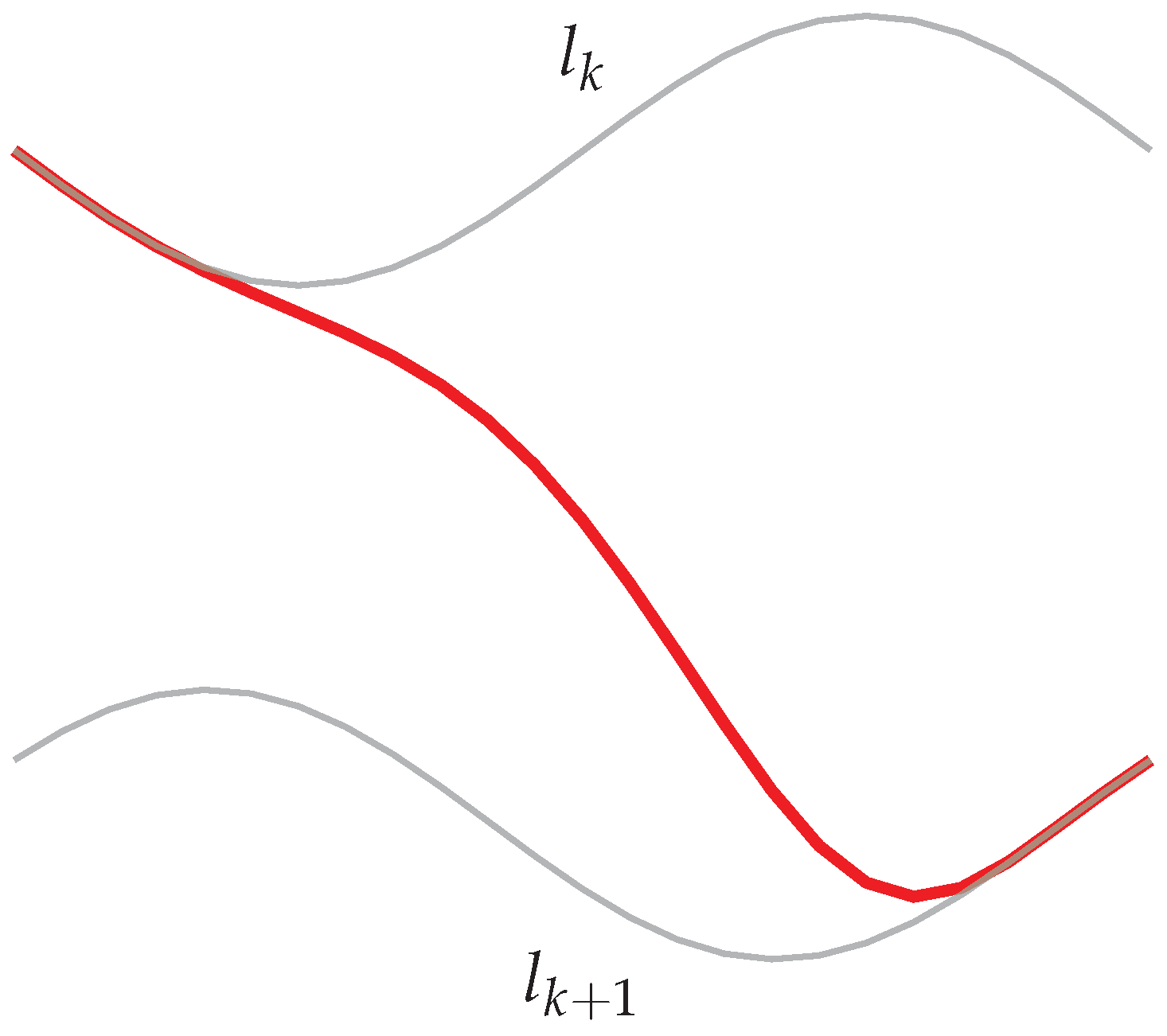
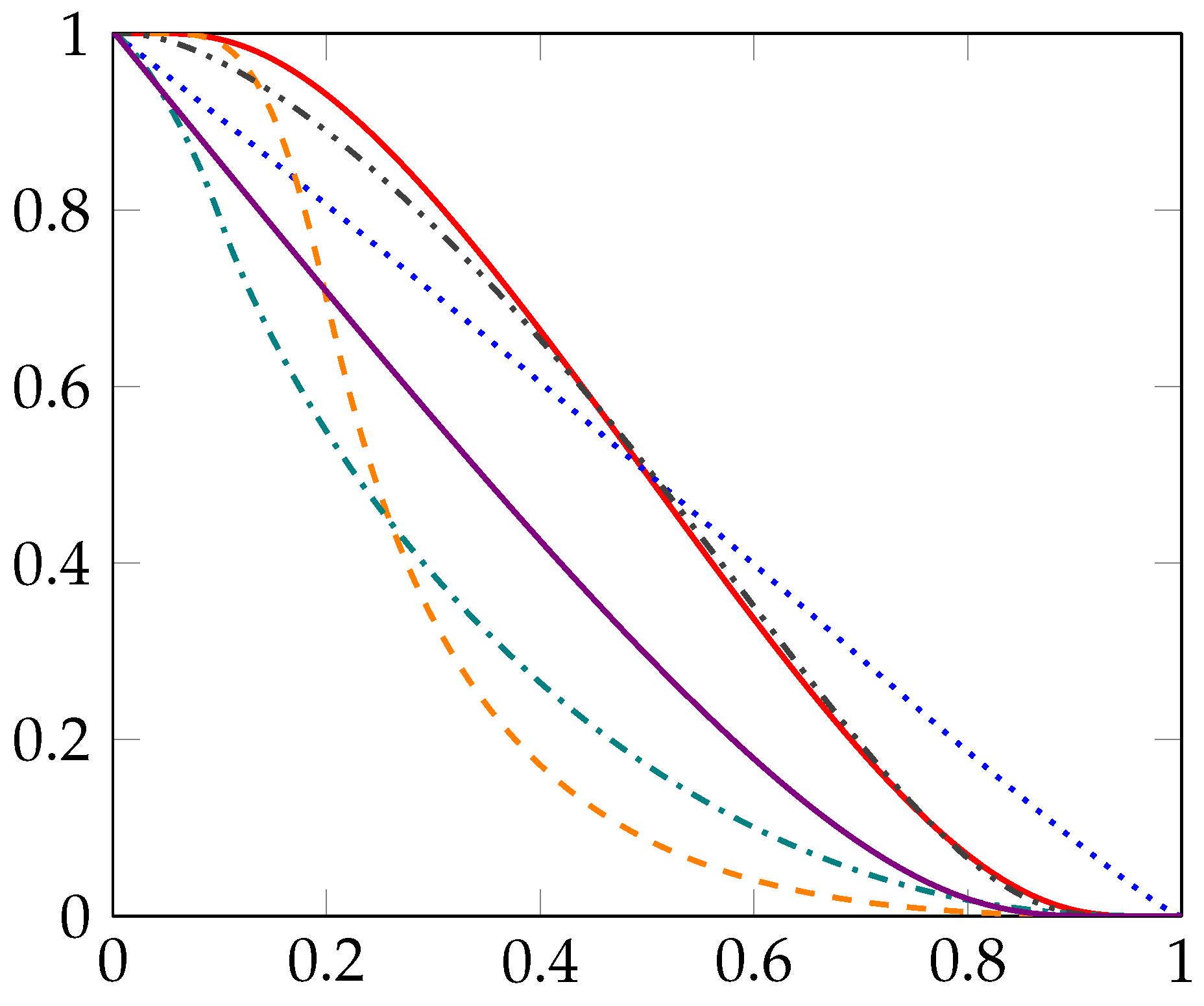
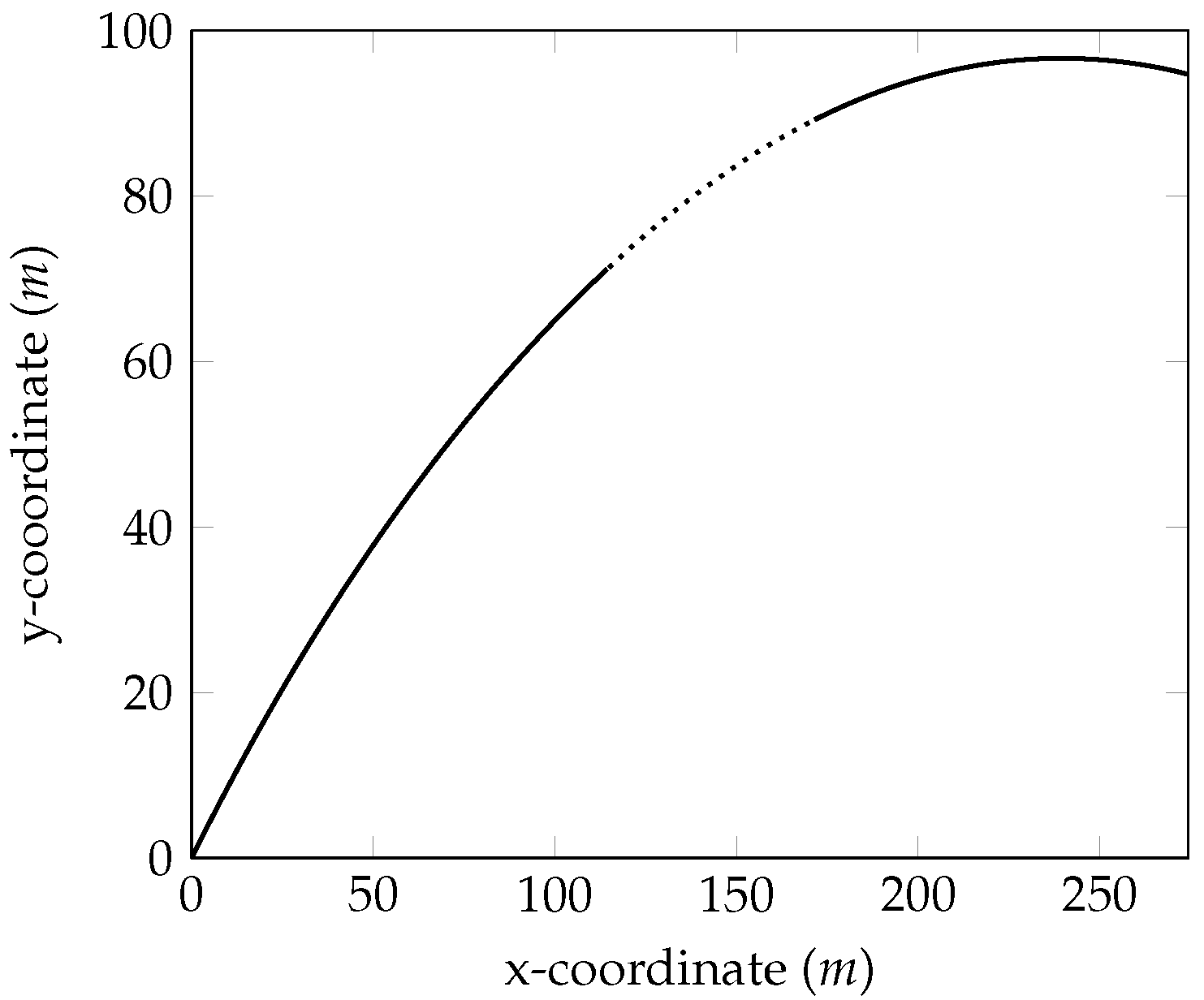

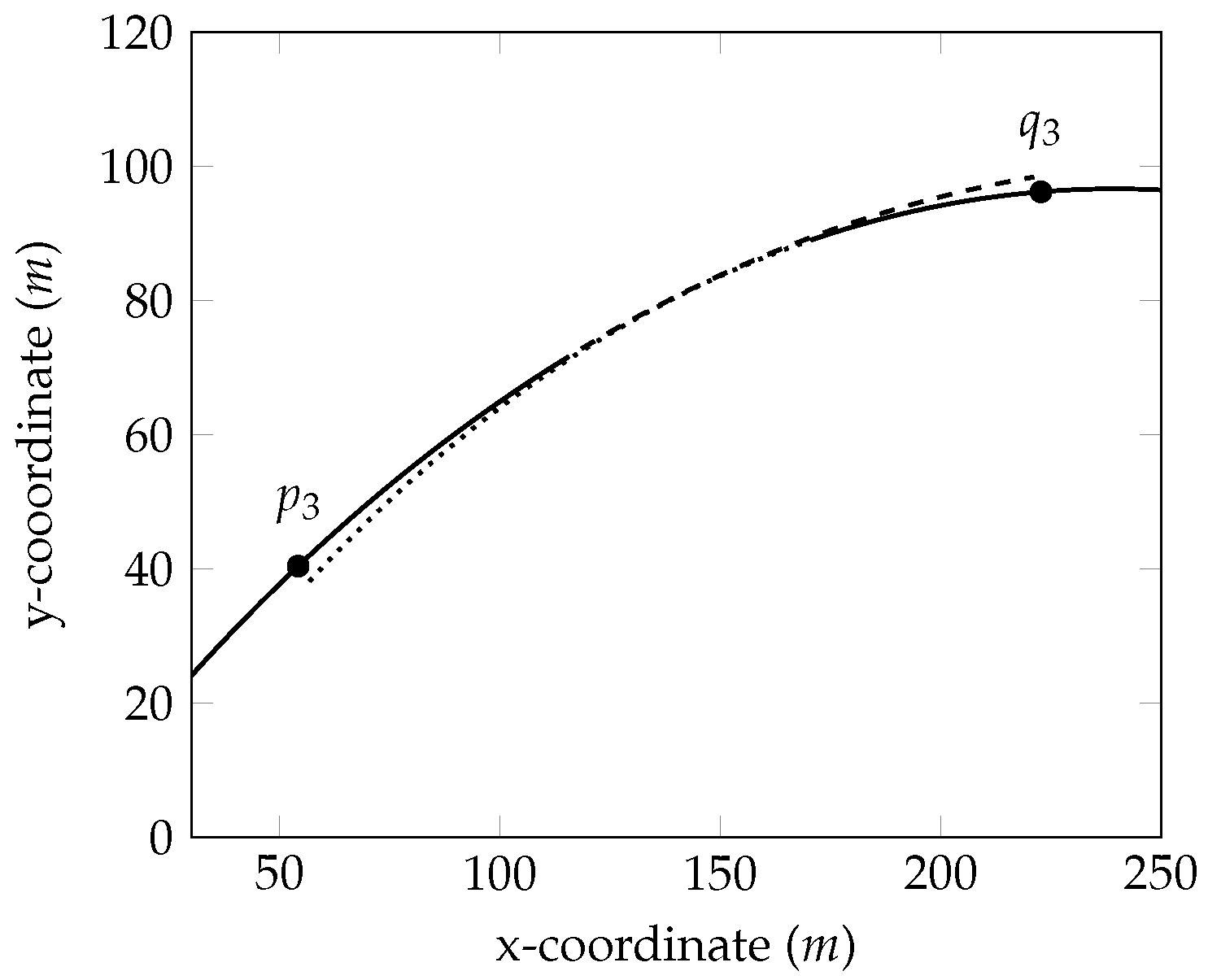
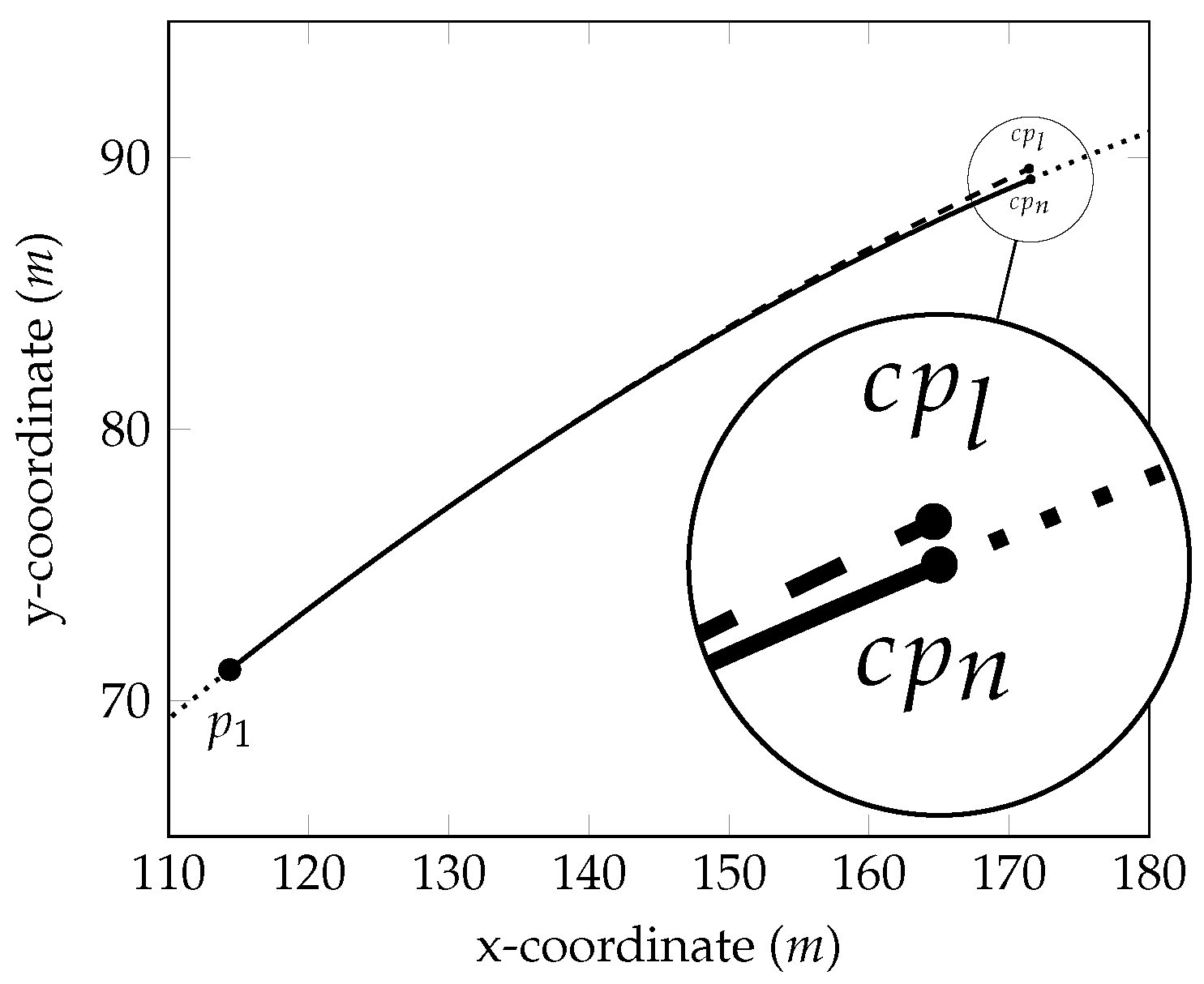
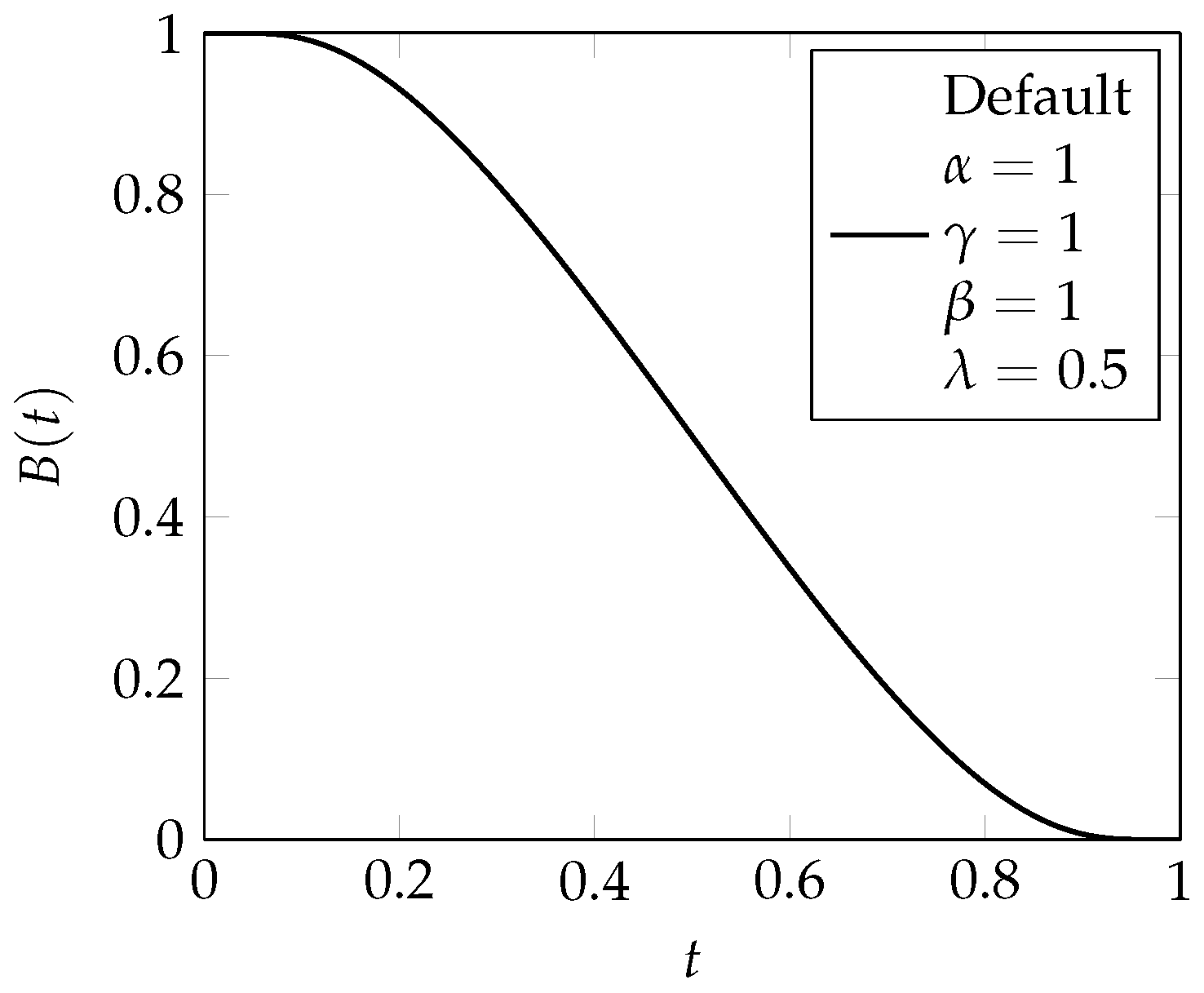
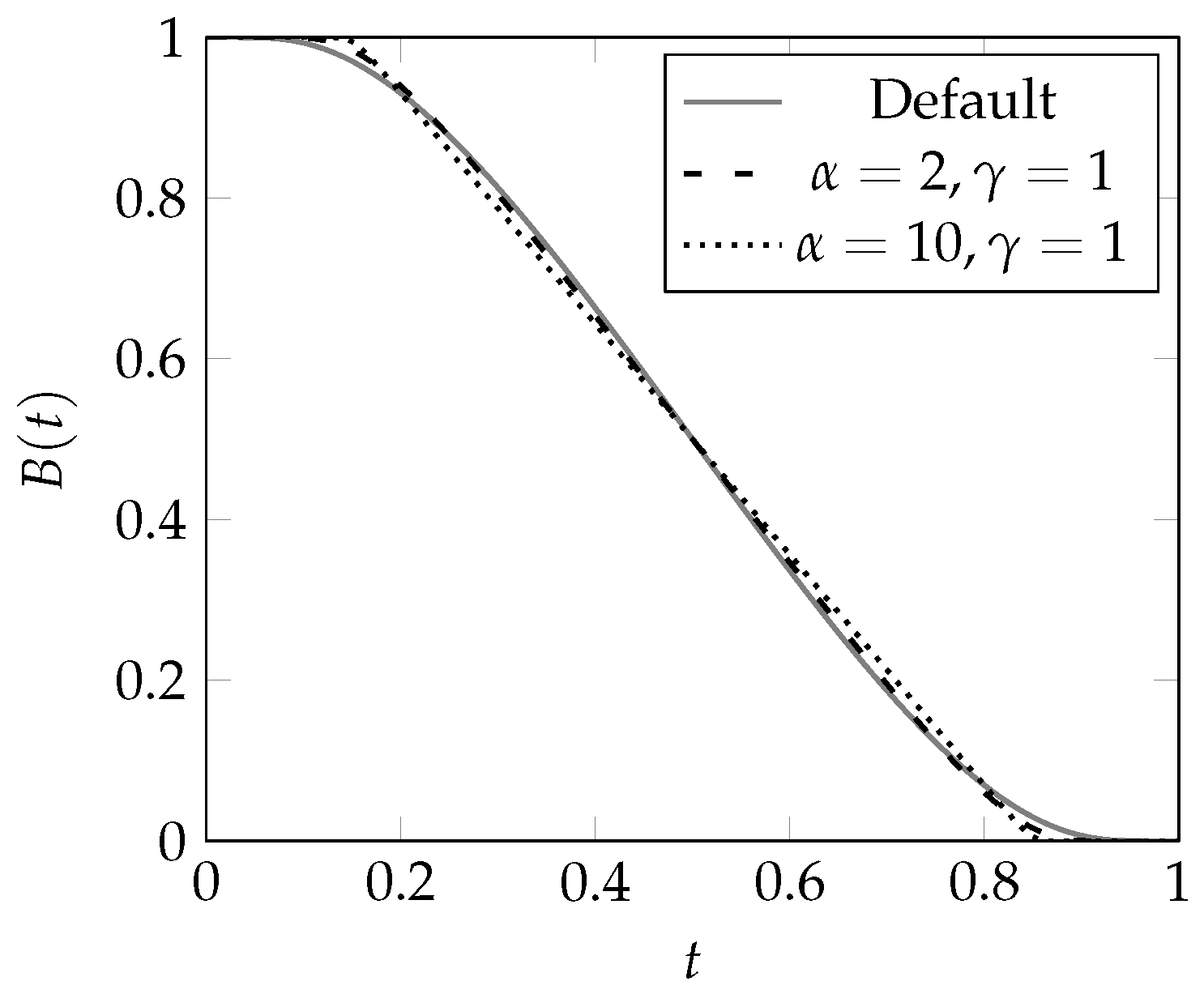
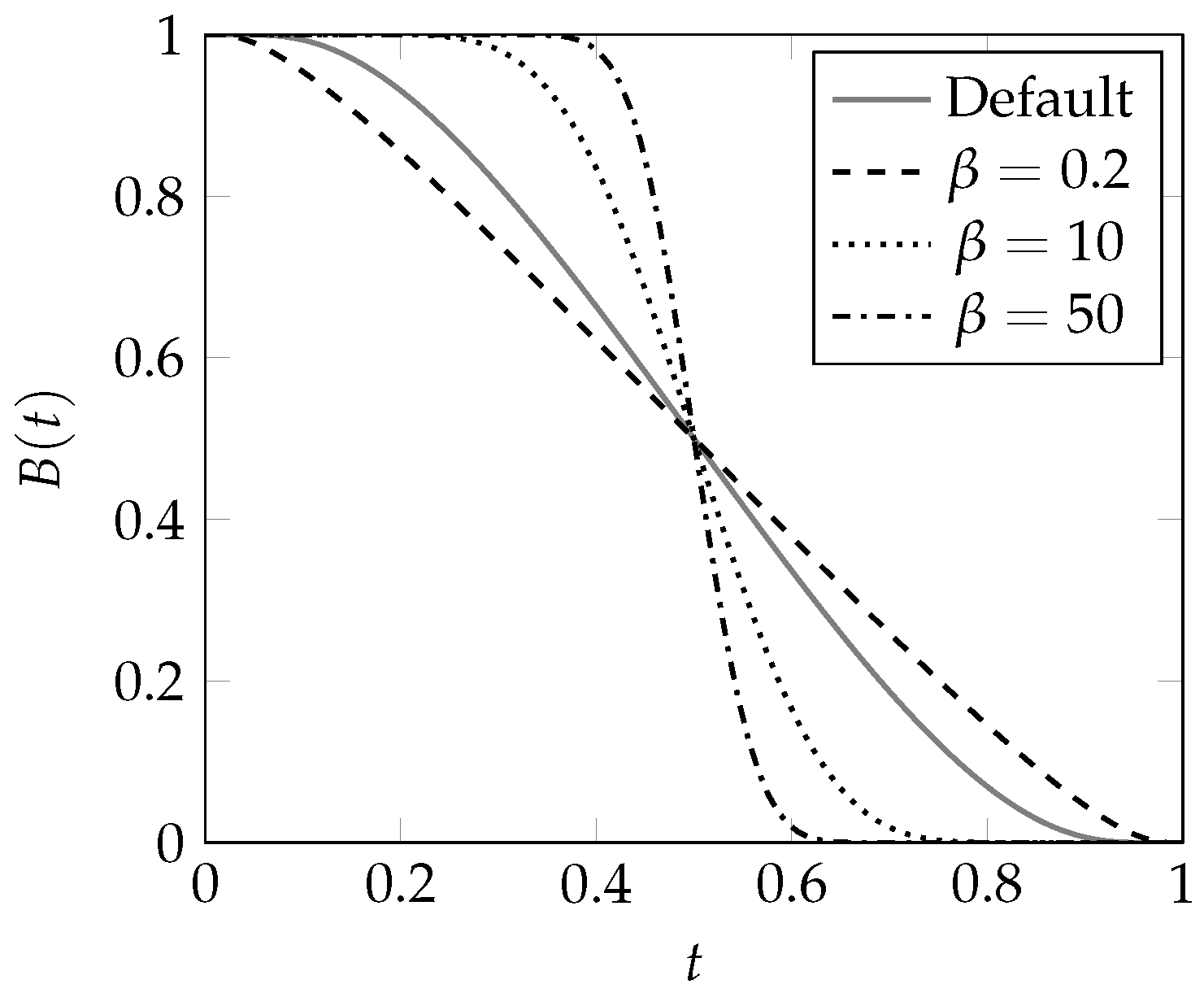
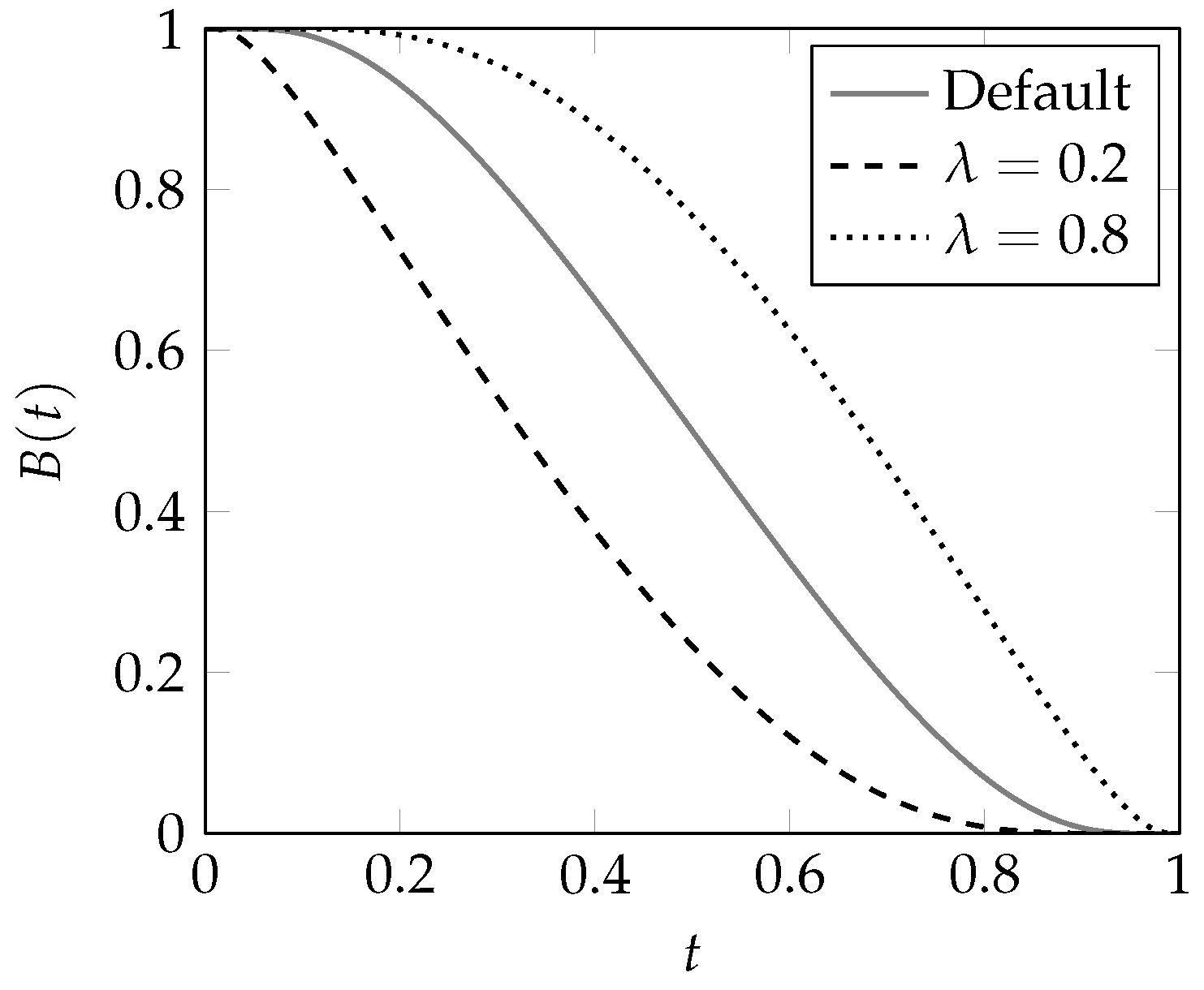
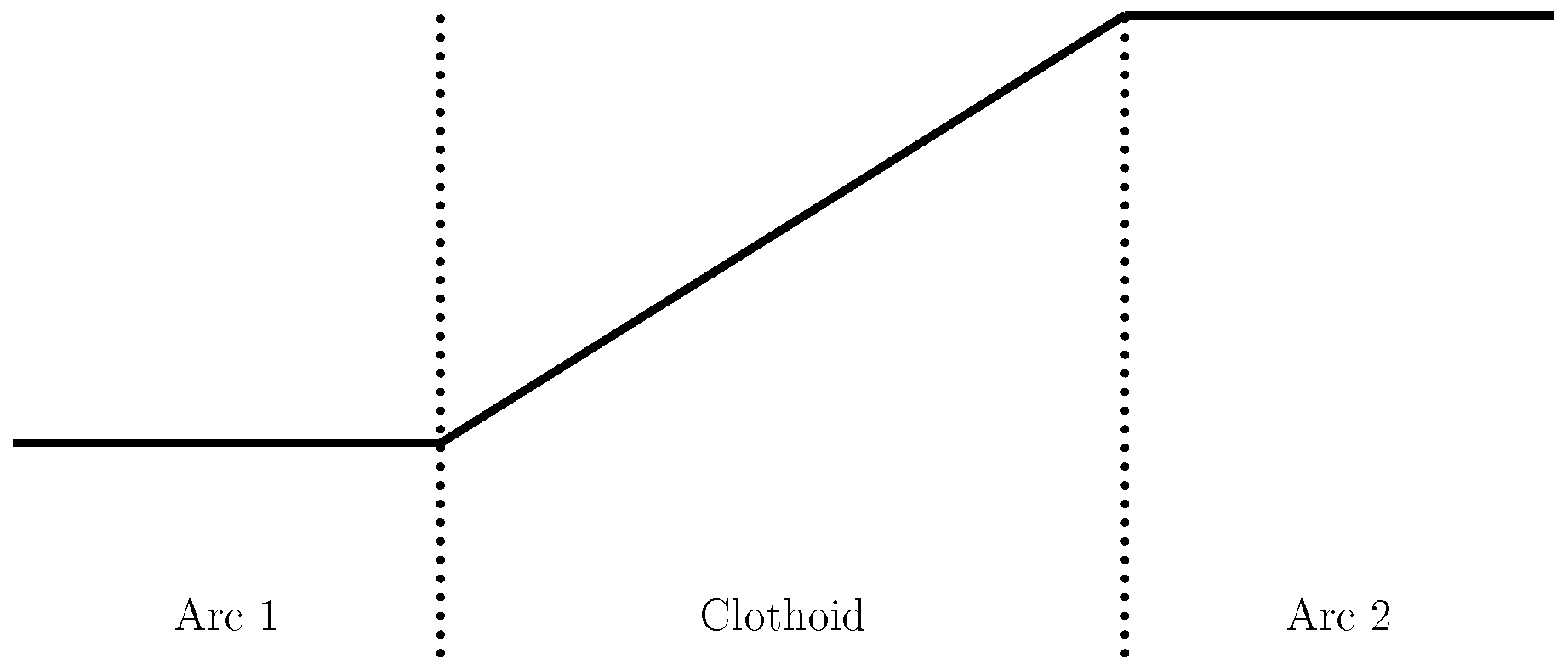
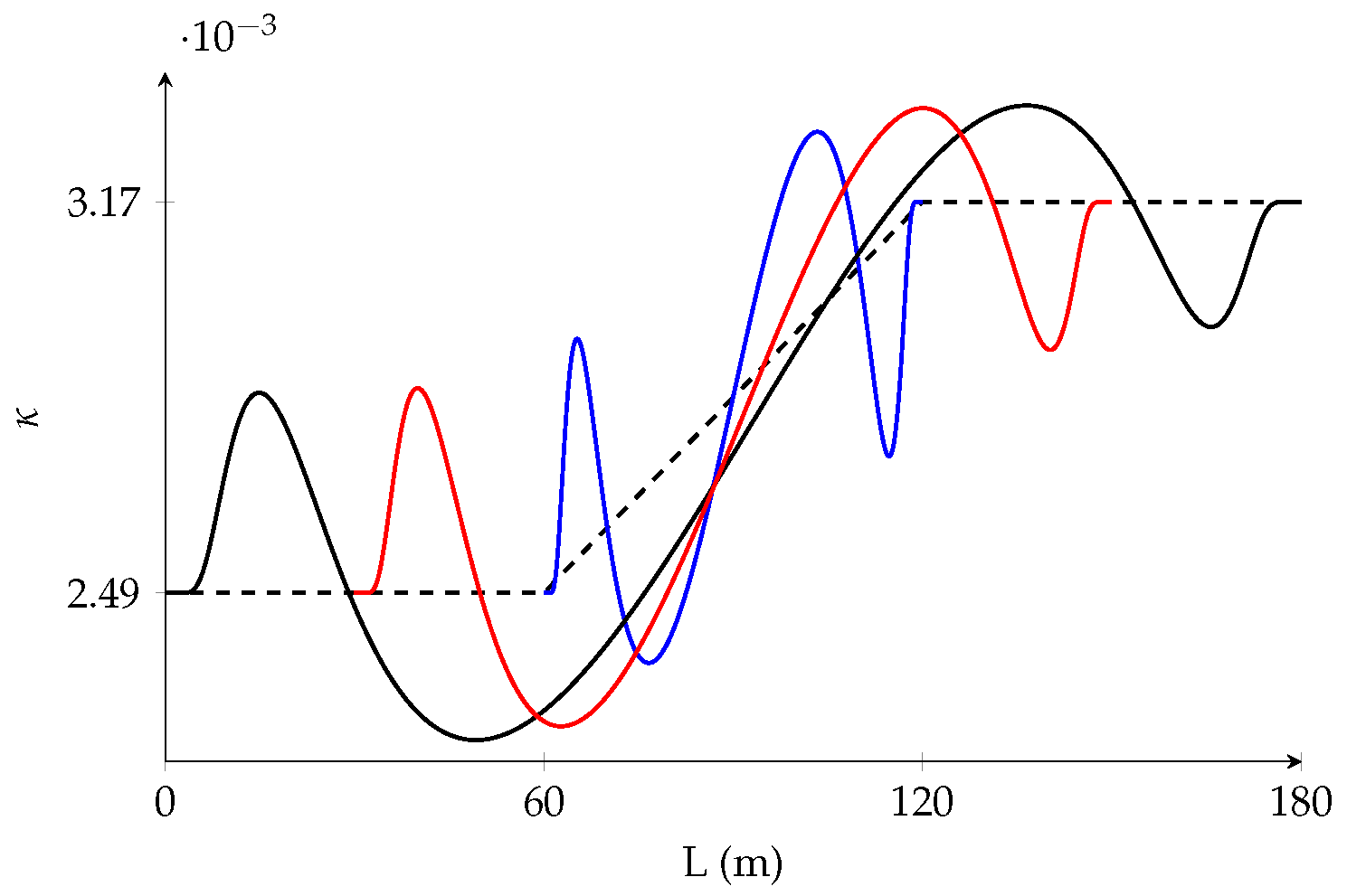
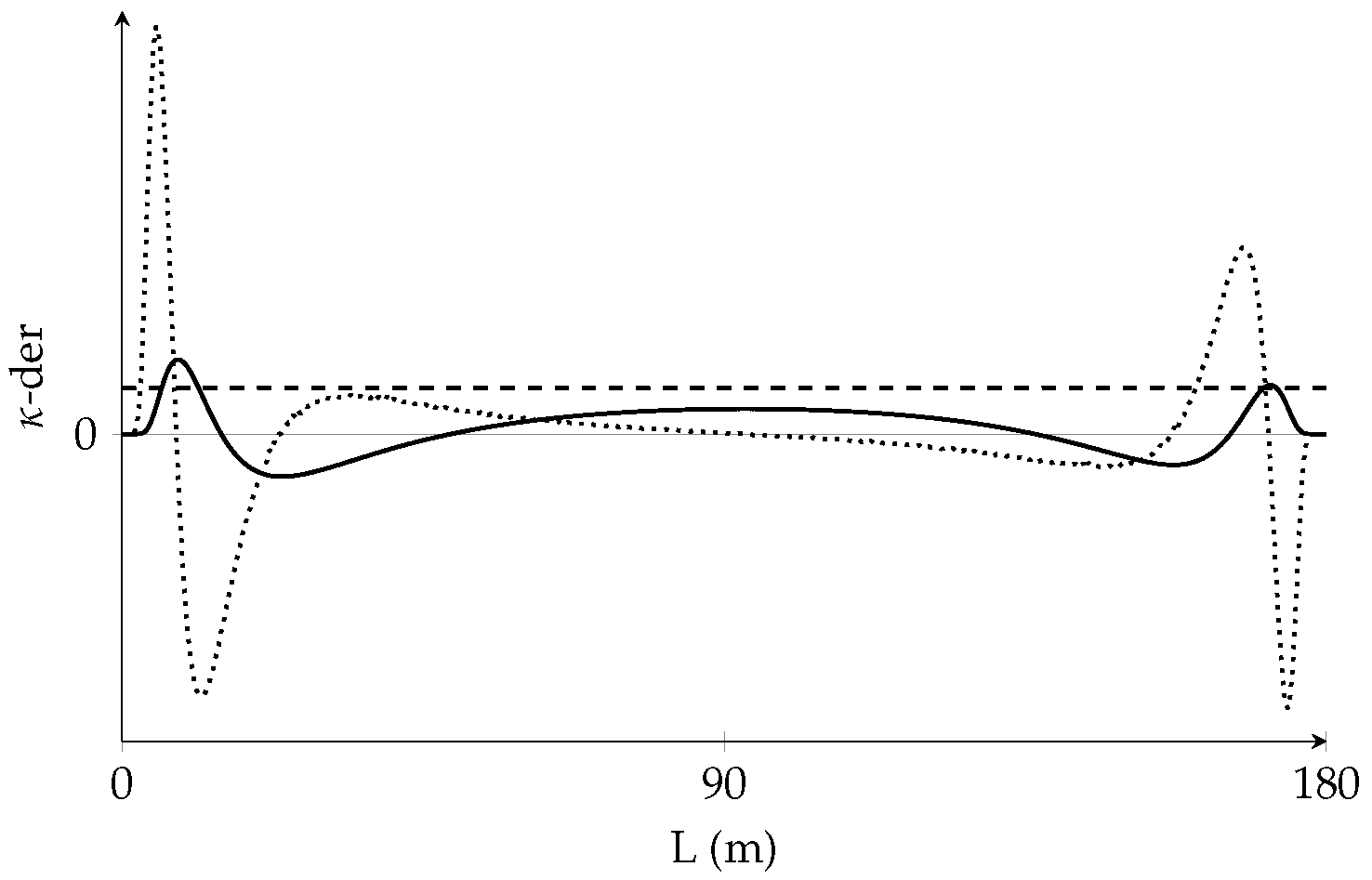
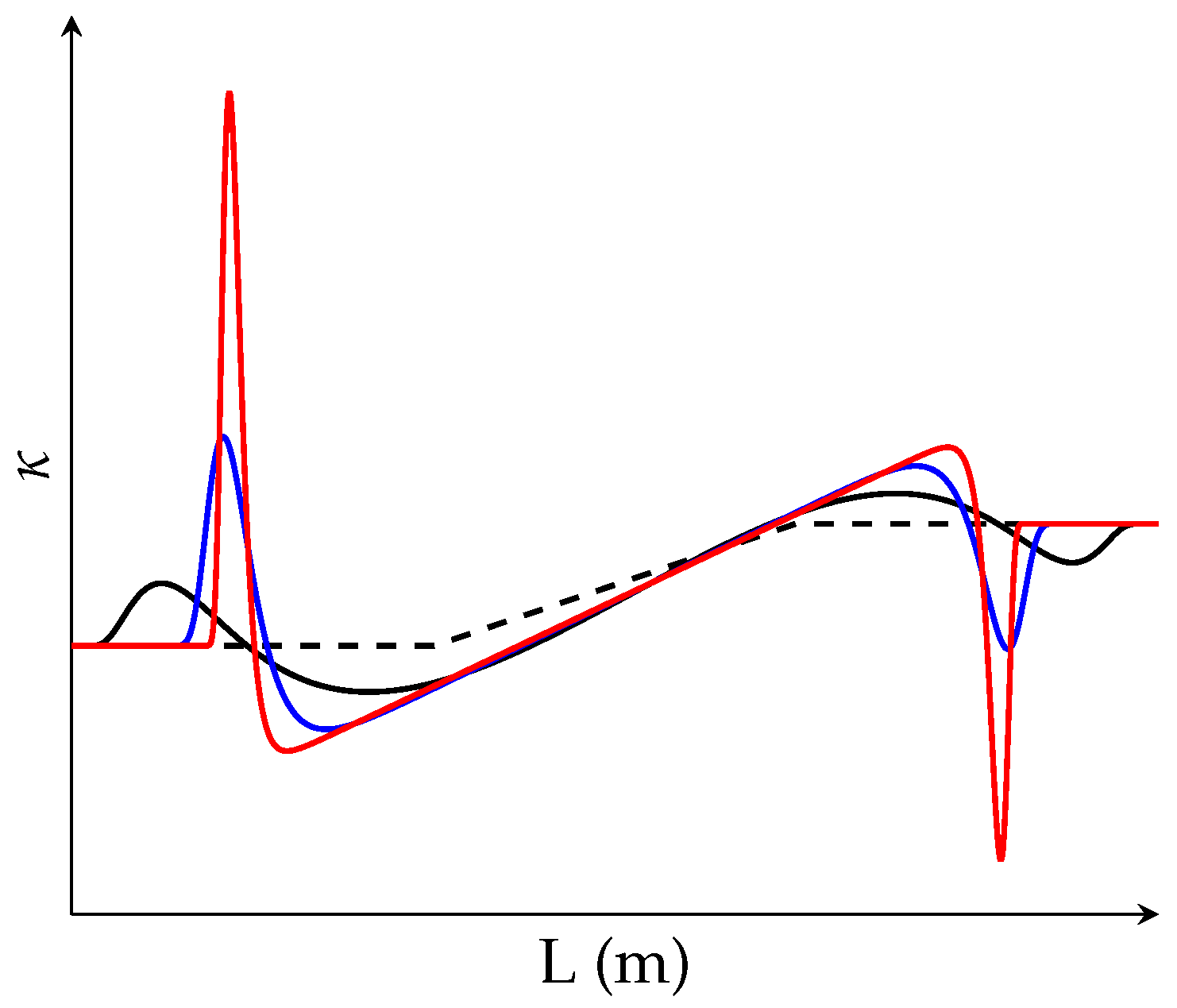

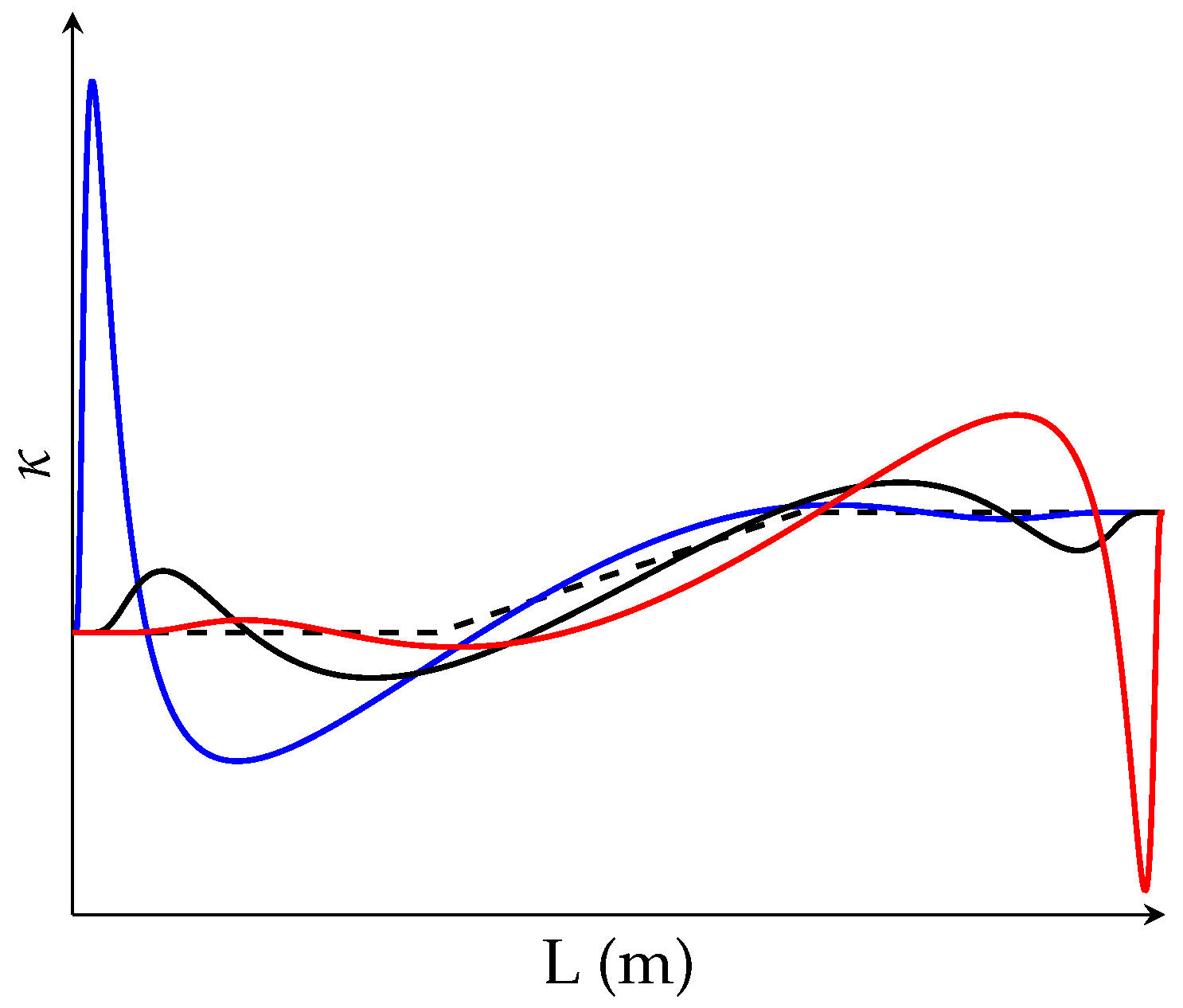
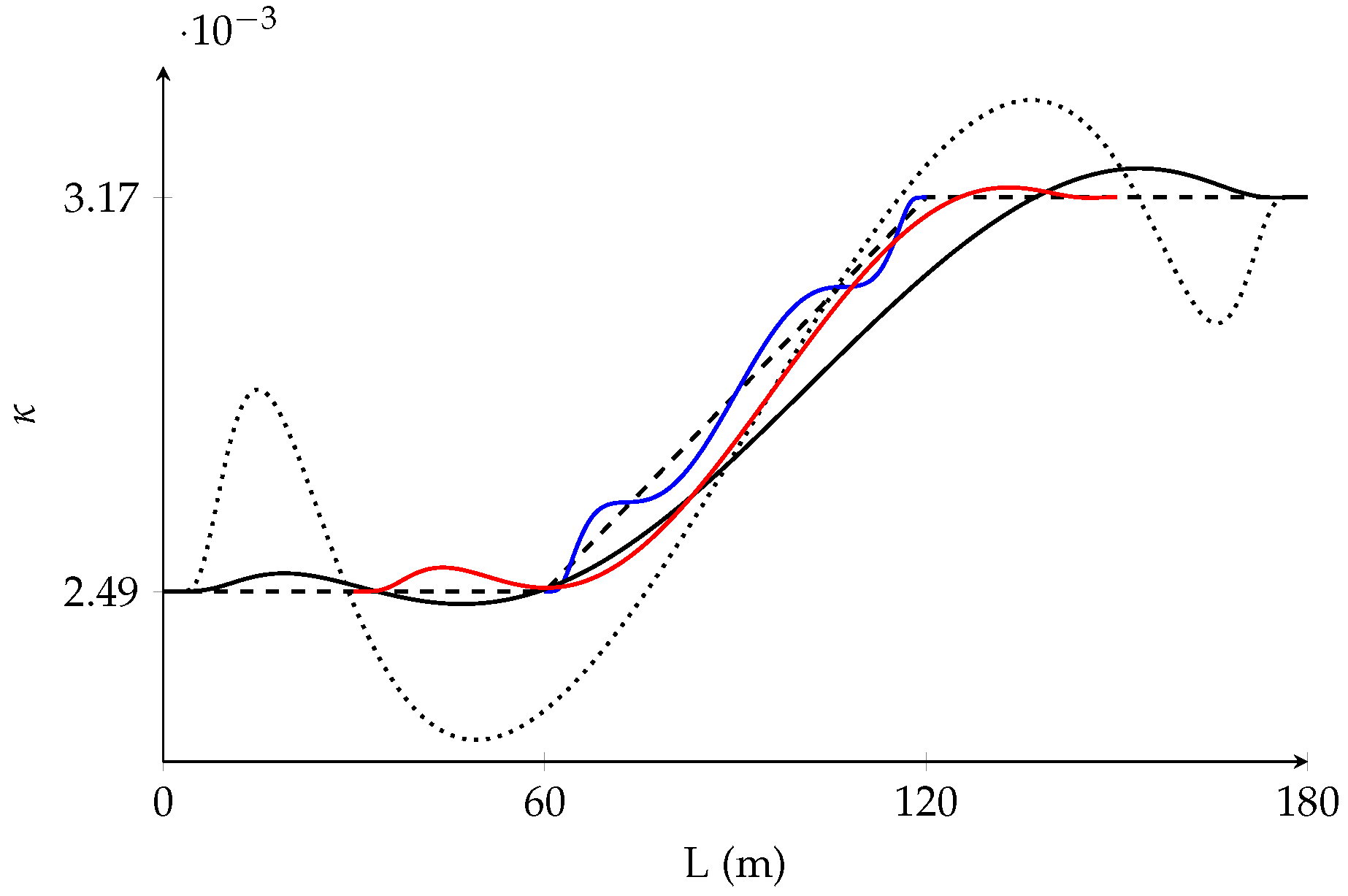
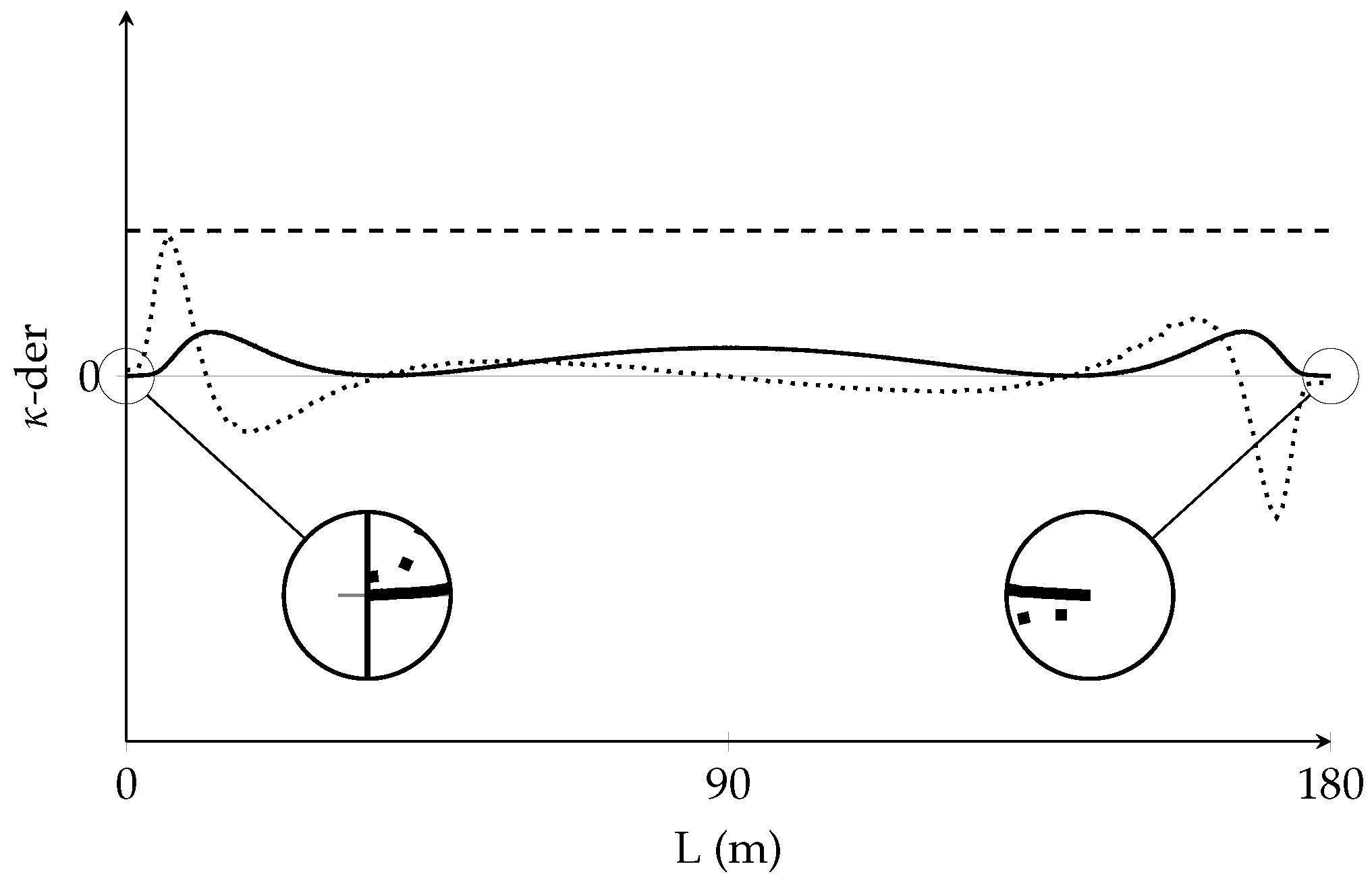

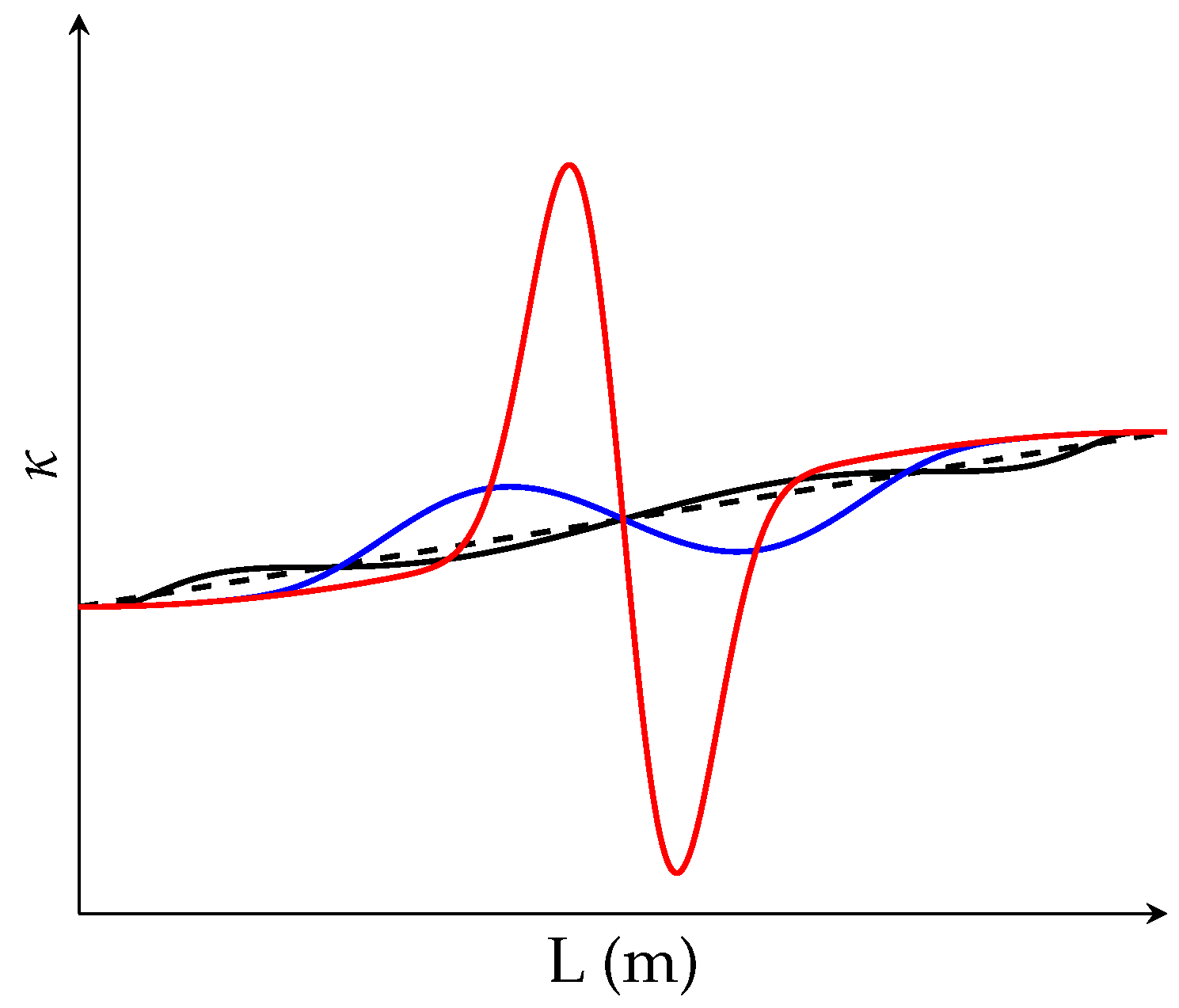
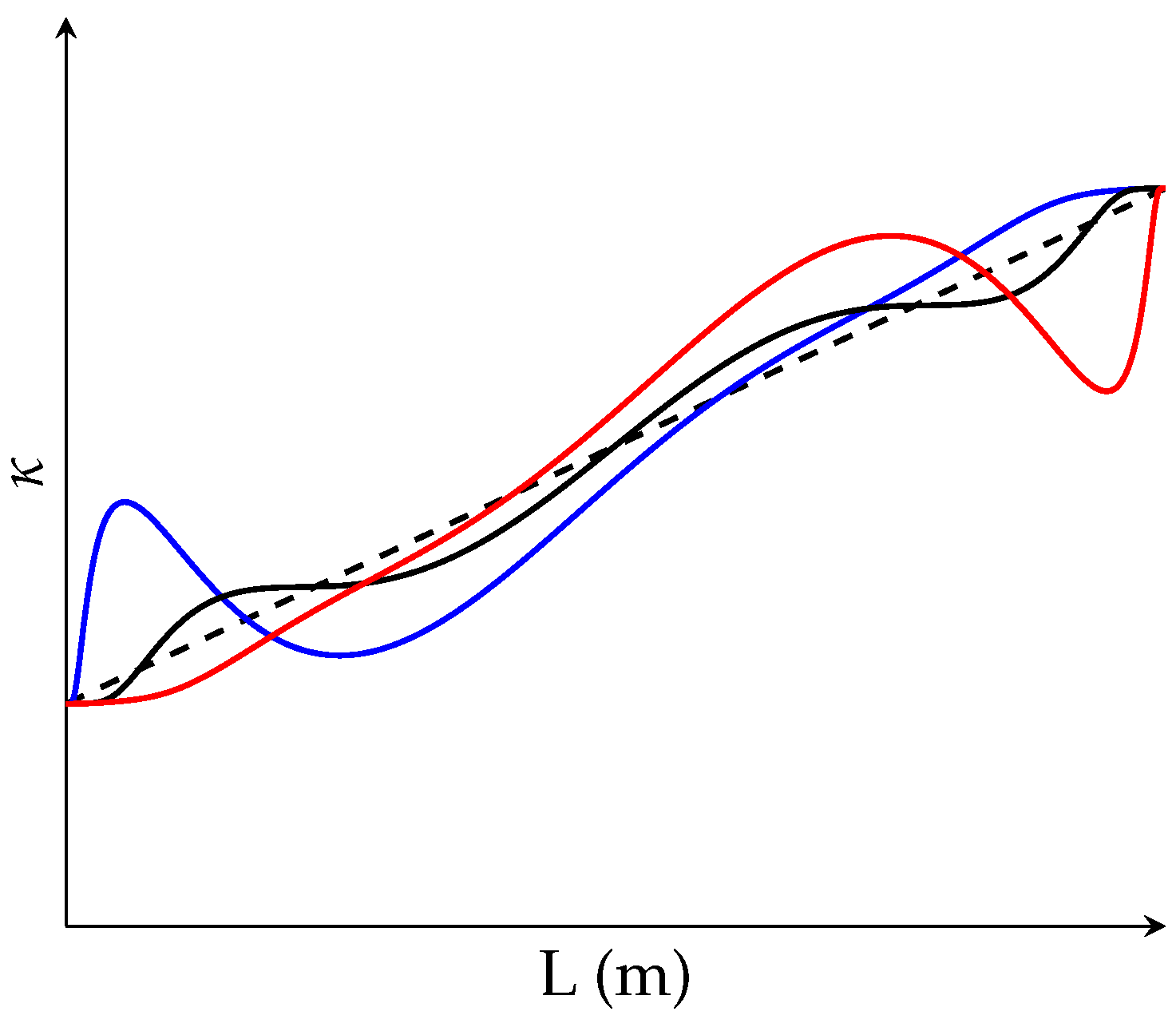
| Arc 1 | Clothoid | Arc 2 | |
|---|---|---|---|
| Start Radius (m) | - | 401 | 315 |
| End Radius (m) | 401 | 315 | - |
| Length (m) | 135.335 | 60 | 103.481 |
| Default | 1 | 1 | 1.0 | 0.5 |
| Tightening 1 | 4 | 1 | 1.0 | 0.5 |
| Tightening 2 | 10 | 1 | 1.0 | 0.5 |
| Slope 1 | 1 | 1 | 8.0 | 0.5 |
| Slope 2 | 1 | 1 | 50.0 | 0.5 |
| Balance 1 | 1 | 1 | 1.0 | 0.2 |
| Balance 2 | 1 | 1 | 1.0 | 0.8 |
© 2020 by the authors. Licensee MDPI, Basel, Switzerland. This article is an open access article distributed under the terms and conditions of the Creative Commons Attribution (CC BY) license (http://creativecommons.org/licenses/by/4.0/).
Share and Cite
Brustad, T.F.; Dalmo, R. Exploring Benefits of Using Blending Splines as Transition Curves. Appl. Sci. 2020, 10, 4226. https://doi.org/10.3390/app10124226
Brustad TF, Dalmo R. Exploring Benefits of Using Blending Splines as Transition Curves. Applied Sciences. 2020; 10(12):4226. https://doi.org/10.3390/app10124226
Chicago/Turabian StyleBrustad, Tanita Fossli, and Rune Dalmo. 2020. "Exploring Benefits of Using Blending Splines as Transition Curves" Applied Sciences 10, no. 12: 4226. https://doi.org/10.3390/app10124226
APA StyleBrustad, T. F., & Dalmo, R. (2020). Exploring Benefits of Using Blending Splines as Transition Curves. Applied Sciences, 10(12), 4226. https://doi.org/10.3390/app10124226





